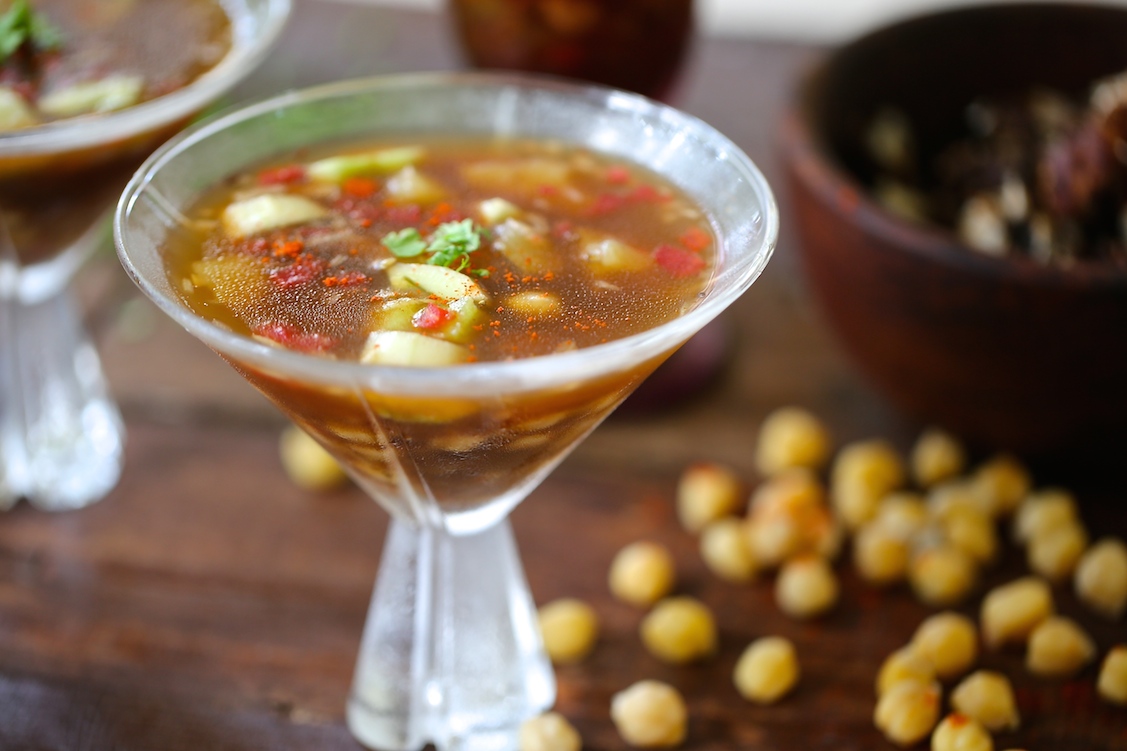
I’m finally back to eating fats after four months of sacrifice! GB (see earlier blog Going Fat-Free) is now history, and I can revert to being the completely gluttonous being that I truly am! It was not just prawns and shellfish that I missed, or the ubiquitous deep fried snacks like pakodas, but I really missed dairy in all its glory – butter, ghee and most of all, the foundation of Indian cuisine – fresh, homemade yoghurt.
Not being able to eat fried snacks and yoghurt meant I couldn’t indulge in one of my favourite Indian treats – chaat! What is chaat, you may ask – and the details are below – but I designed a lovely chaat-flavoured starter for myself that is totally fat-free, and you can enjoy too, as it is super-easy to make! Having lived in Kerala, where none of the usual ingredients were readily available for years, this recipe is designed for chaat-flavour with easily available inputs.
Chaat – to the unitiated – describes a whole gamut of mouth-watering, exotic “street food’ found in the Northern, Central and Eastern parts of India, and most of South Asia. It can range from the simplest, kakri (long-melon) chaat found on the streets of Delhi – nothing more than a chilled cucumber-like vegetable – with salt, spices and the masala of the same name – chaat masala. To the more complicated, samosa-chaat pictured below; chopped samosas with yoghurt, black salt, roasted cumin, chili powder and topped with tamarind chutney and onions. It encompasses the savoury and sweet aloo tikki, the watery yet crisp round gol-gappa and larger, more filling raj kachori. These popular road-side dishes can be considered snacks but are also meals within themselves. The one word that describes their multi-textured taste is “chatpata” – sweet, salty, tangy and spicy.

My favourite, without doubt, is the Delhi dahi-papdi-chaat with the small fried disks of flour (papdi or puris), garbanzo beans, potatoes and fried lentil dumplings (wadas), soaked in yoghurt and coated with a thick, gooey brown tamarind sauce. And as “chaat” means lick, I also lick my small leaf bowls of this favourite snack, totally clean! As things went on my fat-free diet, chaat – except for the boiled or freshly cut vegetable type – was definitely out of bounds. I craved the sulphurous aroma of black salt, the zesty tang of tamarind, the nutty notes of cumin all smothering my mushy soft, salty potatoes and crunchy garbanzo beans! But without yoghurt and fried puris or wadas, I struggled to find body for my chaat! It just became another veggie salad!

That’s when I came up with the idea of using gelatin – completely fat free, flavour free and perfect to be enhanced by tamarind and spices – to engulf my chaat-staple vegetables! This Jellied Chaat looks lovely in a martini glass, makes for an impressive starter, and can even be used as a dip with roasted (not fried!) papads!
Because I live in the tropics, I have used 2 tablespoons of gelatin to 2 cups of liquid. This makes for a strong jelly, which sets quickly and melts slowly. For a lighter jelly, or if you live in a cold environment, 1 tablespoon should be sufficient. Enjoy your Jellied Chaat – I am sure your guests will too!
Spicy Tamarind Jellied Salad (Chaat)
Ingredients
½ cup cooked garbanzo beans
1 large potato boiled and diced
1 small cucumber, seeds removed and diced
3 tablespoons onion, finely chopped
1 tomato, finely chopped
50 grams dry tamarind
2 cups water
1 teaspoon rock salt or black salt
½ teaspoon cumin seeds, roasted and ground
½ teaspoon red chili powder
1 teaspoon fresh ginger or ½ teaspoon ground ginger powder
1 tablespoons brown sugar
2 tablespoons plain gelatin
3 tablespoons coriander, finely chopped

Soak tamarind in ½ cup water.
In the mean time, chop vegetable and combine garbanzo beans, potatoes, cucumbers, onion and tomatoes in a mixing bowl. Mix well and divide evenly between 4 serving bowl or glasses in which you will set the salad. (I like to use martini glasses for visual appeal.)
Pour remaining 1½ cup water in a small saucepan. Add rock salt, cumin, red chili powder, ginger and brown sugar to the water.
Squeeze tamarind and strain tamarind water into saucepan. Bring to a boil, stirring mixture (about 4-5 minutes).
As soon as mixture boils, remove pan from heat. Whisk in two tablespoons gelatin, pouring a little gelatin in at a time.
Allow gelatin mixture to cool 3-4 minutes, stirring occasionally.
Pour gelatin mixture into glasses. Once glasses are cool, refrigerate until gelatin is set – about an hour (depending on the temperature of your refrigerator.)
If desired, garnish with coriander and serve.
Serves: 4, as individual salads
Ingredients: 13
Critical Ingredients: The flavour of this salad comes from the tamarind and spices used. Rock salt gives it the pungent sulphurous flavour that chaats have, but you can use regular salt. I prefer to use fresh ginger, but powdered ginger works as well. The ingredients of the salad can be changed, and if garbanzo beans are not available they can be left out. I have used Indian gelatin; you may need to adjust the amount depending on the quality of the gelatin. Another nice ingredient to add is Indian boondi, if available.
Enjoy your fat-free Indian chaat!




